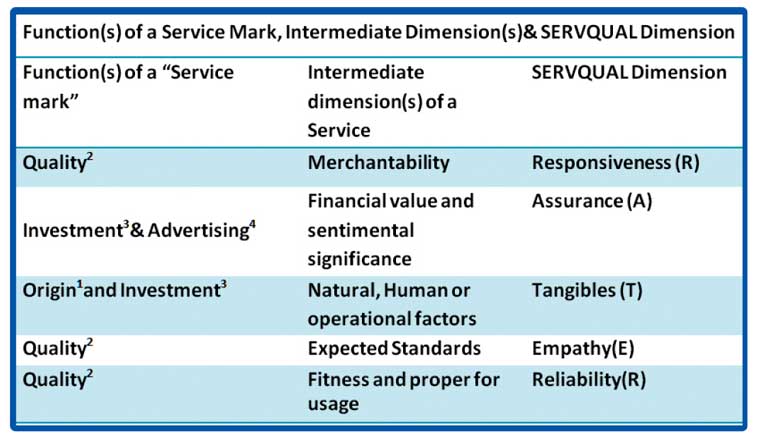Sunday Apr 20, 2025
Sunday Apr 20, 2025
Thursday, 4 January 2018 00:00 - - {{hitsCtrl.values.hits}}
The Intellectual Property (IP) Act No 36 of 2003 is the present legal regime governing IP in Sri Lanka. While there are manifold types of IP, “mark” is interpreted as trademark or service mark (S. 101, IP Act 36/2003).
The IP Act of Sri Lanka acknowledges four specific functions: origin, quality, investment and advertising, also known as the framework for management of marks. In the backdrop of these functions, trademark owners have property interests of assignment (Chapter XX1V of IP Act) and licensing (Chapter XXV of IP Act). On the contrary, competitors have a duty to preserve the trademark rights of owners and refrain from acting in bad faith or infringing the trademark interests.
nApplication and registration of resident trademarks is 4356 and 3938 respectively in 2017 (Jan-Jul): 418 resident applicants not granted trademark registration.
nApplication and registration of non-resident trademarks is 2033 and 1639 respectively in 2017 (Jan-Jul): 394 non-resident applicants not granted trademark registration.
In this light, it is useful to delve into an area of trademarks; service marks. Only a limited number of resident applicants for trademarks are granted trademark registration which is an observable phenomenon in 1H 2017.
The application: registration proportion of trademarks expects a growth in 2H of 2017. In compliance with the law, a trademark is defined as “any visible sign serving to distinguish the goods of one enterprise from those of another”.
The flipside of “any visible sign setting to distinguish the services of one enterprise from those of another enterprise” is the meaning of a service mark (Section 101, IP Act 36/2003). In this context, the Origin function1 denotes the origination of a product or service in a given country, group of countries, region or locality. The indication of source is by means of any expression or sign.
“Ceylon Tea”, a well-known trademark, is symbolised by a certification mark (S. 142, IP Act 36/2003) indicating that the good is certified by the proprietor of the mark in respect of origin material, mode of manufacture and quality.
Golan Heights Wine is a Geographical Indication of vineyards in Israel which is a source of quality-fermented wine products. Production, Processing and Packaging (3P Processes) affect the ethical sourcing of wine. This process is a combination of natural, human and operational factors attributed to the origin of a product (Protection of Geographical Indications, UN).
Quality function2 denotes the guarantee from the manufacturer that the expected standards of the product (service) are achieved. There are two aspects to quality: merchantability and fitness for usage, thus meeting the consumer expectations (Sale of Good Ordinance, 1958).
In the context of a service, the quality of railway transportation is measured by availability and responsiveness. Quality of education is measured by the adoption of modern teaching and learning techniques and lecturer’s expertise. Saleability of a product in the market for a reasonable price, minimum visible defects, and remedies for buyer in the case of invisible defects among other things are the indicators of merchantable quality.
Any mark would contribute towards the good-will and reputation of an organisation. Therefore, marks are used as a value-addition mechanism for an organisation emphasising on Return-on-Investment (ROI). Investment function3 of a trademark is defined as a collection of financial and sentimental values interpreted by the  product or service “mark” in the market. There are two entities: the product and the mark associated with it.
product or service “mark” in the market. There are two entities: the product and the mark associated with it.
Coca-Cola is a well-known trademark associated with fizzy beverages. Similarly, Fanta is a product associated with Coca-Cola Company. However, it is debatable whether the product gives recognition to the associated mark or vice versa, thus establishing two schools of thought in the investment function.
Advertising4 is also a function of trademarks. A visible sign associated with a product could be used to target and position it in the eyes of the segment of consumers, against competitors. Advertising is a cost for the organisation and generates ROI. This function of a trademark benefits different stakeholders namely: customers, end users, media companies, potential shareholders and proprietors of the mark as well. FMCG companies advertise their new products on electronic media at prime time. Thus generating profits by increasing public awareness of the product. However, there is a thin-line between the advertising and investment functions. Although advertising budgets are allotted for a product, certain companies fail to categorically account for the investment associated with marks in the annual statement of accounts.
It is intellectually stimulating to map the functions of a “mark” to the service quality model (SERVQUAL) introduced by Zeithaml, Parasuraman & Berry in 1980. As to date, the scale of quality in the service sector is measured by five key service dimensions: Responsiveness, Assurance, Tangibles, Empathy and Reliability (R-A-T-E-R).
The RATER dimensions are described as follows: The willingness to help and provide prompt services to customers is the essence of responsiveness (R) factor. Assurance (A) is expressed as the knowledge, loyalty and courtesy of employees and their capability to convey trust and confidence towards customers who are supreme. Tangibles (T) are a collection of equipment, personnel and the appearance of physical facilities of a service. The due diligence, care and individualised attention rendered by the organisation to its customers is denoted by Empathy (E). Organisation’s ability to perform the promised services and discharge duties dependably and accurately is an expression of reliability (R) factor.
Therefore, the four functions of a “mark” could be logically associated with the R-A-T-E-R factors in the light of an intermediate dimension each. These intermediate dimensions practically drive the service quality of organisations.
(The writer is a researcher in the field of management of IP. She is a lawyer by profession and a lecturer.)

Discover Kapruka, the leading online shopping platform in Sri Lanka, where you can conveniently send Gifts and Flowers to your loved ones for any event including Valentine ’s Day. Explore a wide range of popular Shopping Categories on Kapruka, including Toys, Groceries, Electronics, Birthday Cakes, Fruits, Chocolates, Flower Bouquets, Clothing, Watches, Lingerie, Gift Sets and Jewellery. Also if you’re interested in selling with Kapruka, Partner Central by Kapruka is the best solution to start with. Moreover, through Kapruka Global Shop, you can also enjoy the convenience of purchasing products from renowned platforms like Amazon and eBay and have them delivered to Sri Lanka.
Discover Kapruka, the leading online shopping platform in Sri Lanka, where you can conveniently send Gifts and Flowers to your loved ones for any event including Valentine ’s Day. Explore a wide range of popular Shopping Categories on Kapruka, including Toys, Groceries, Electronics, Birthday Cakes, Fruits, Chocolates, Flower Bouquets, Clothing, Watches, Lingerie, Gift Sets and Jewellery. Also if you’re interested in selling with Kapruka, Partner Central by Kapruka is the best solution to start with. Moreover, through Kapruka Global Shop, you can also enjoy the convenience of purchasing products from renowned platforms like Amazon and eBay and have them delivered to Sri Lanka.